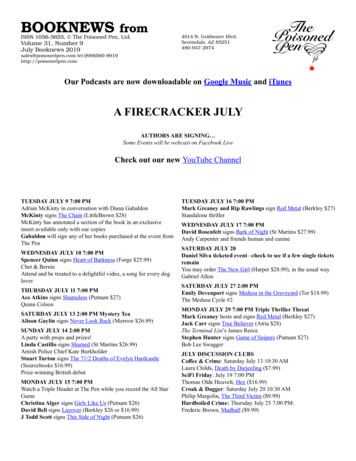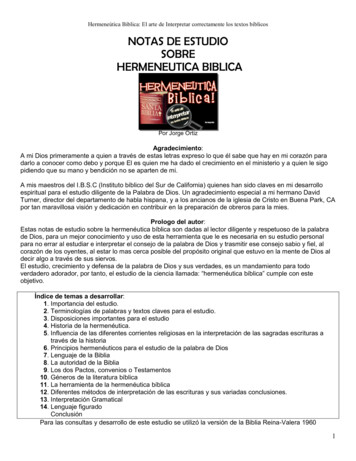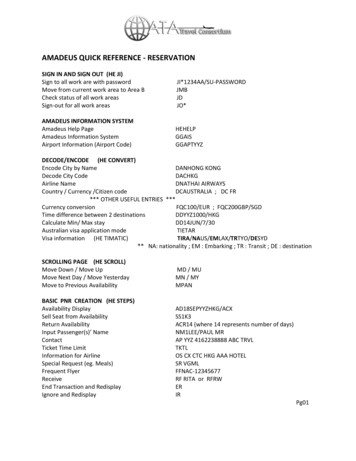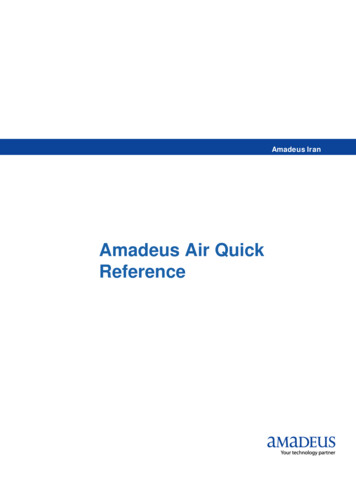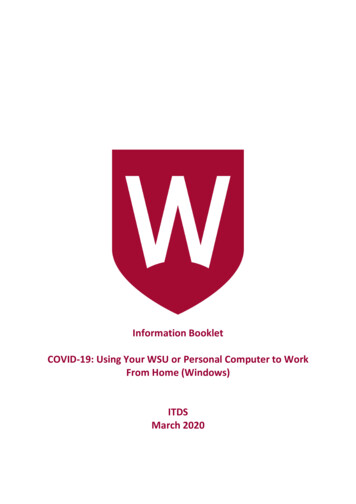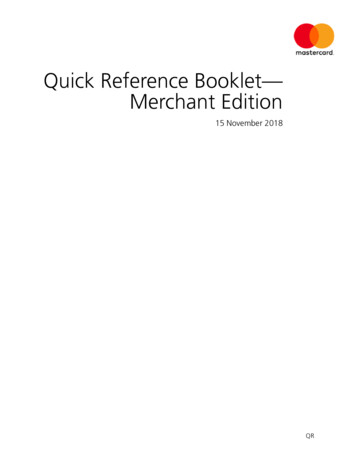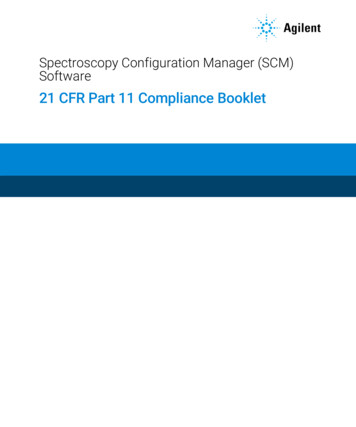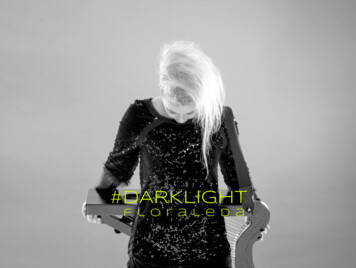
Transcription
#DARKLIGHTf l o r a l e d a
TRACKLIST01. Andras (Max Richter)02. Temple of Sound (Roberto Cacciapaglia)03. Hammers (Nils Frahm)04. Requiem for a Dream/Lux Aeterna (Clint Mansell)05. Welcome to Lunar Industries (Clint Mansell)06. Adagio for Strings (Samuel Barber/Tiësto)07. Said and Done (Nils Frahm)08. Europe After the Rain (Max Richter)09. Silencio du Park Güell (Joe Hisaishi)10. Antartica (Roberto Cacciapaglia)11. The Beatitudes (Vladimir Martynov)12. We arrive from far away (Floraleda Sacchi)13. Till the End (Ólafur Arnalds)14. Near Light (Ólafur Arnalds)Electric Harp, arrangements/compositions, electronics and sampling by Floraleda Sacchi
[65:00]About: Floraleda plays Electric HarpGenre: Electronic, Experimental, Cinematic, Modern Classical, Instrumental, Sci-fi, Avant GardeMusic: All arrangements/compositions, electronics and sampling by Floraleda SacchiRecording & Mastering: Filadelfo CastroPhoto: Marco CoppolaLabel: & 2017 Amadeus Arte Cat. No. AA17003Distribution: NAXOSOfficial Website: darklight.floraleda.comThanks to: Schertler, Harpsicle Harps, Lyon & Healy HarpsThank you for purchasing this recording and support our work!
DARKLIGHTEnglish text
Often I was asked why I play the harp. I think this fully joins my contrasts. Restlessness and curiosityaccompany me and thus the Darklight (not an oxymoron, but an extreme perception of eyes and mind) isa state of flow.In this state of mind, I compose or arrange combining acoustic and digital means, without distinguishingwhere it ends a delay and starts a pad created with a violin bow on the strings of the harp; without caringwhere it acts a digital filter or a rubber damper on the strings, which one is an harmonic or a compressedsample. I worked with open mind simply trying to recreate the music sounding in my head.I find it fascinating to work with an acoustic instrument and electronics (a form of handicraft that requireshours of dedication as needed to play a musical instrument) and the combination gives an incrediblemeans to create something extremely personal.This collection includes many famous pieces and is young: the oldest piece is 16 years old.Fortunately it is difficult to place this album in a genre.01. Andras (Max Richter)“Andras is the imaginary composer of this music, from my album Memoryhouse (2002). This needs a senseof urgency and intensity as it progresses.” (Max Richter)In my version, I imagine Andras playing eyes closed and seeking a chord. The music comes from a buzzingfoggy gray background, it blooms suddenly and it fades away in the same background noise that isbecoming more and more intrusive today.
02. Temple of Sound (Roberto Cacciapaglia)“Temple of Sound” is a composition included in the album “Alphabet” (2013). Recorded by Cacciapagliahimself, the album entered the iTunes top ten chart for several weeks.The temple of sound is a magical place where I love to be. The opening chords are solemn as tolling ofbells. While I play, my sound simultaneously generates an harmonic pedal, cascades of bright sounds andechoes. A place of light and bliss that expands up to embrace the dissonance.03. Hammers (Nils Frahm)I loved the album “Spaces” (2013) by Nils Frahm at first listening. “Every space I performed in has its ownmagic and spirit.” (Nils Frahm).“Hammers”, as the title anticipates, is percussive. An exciting piece that requires energy, stamina anddetermination in the player, but it gives the same to the listener.
04. Requiem for a Dream/Lux Aeterna (Clint Mansell)It is difficult to arrange such a popular piece that won several awards and was the soundtrack in thenamesake movie as well as in many others like “The Lord of the Rings”, “The Da Vinci Code” (to quote onlythe two most famous), and dozens of series, commercials and TV jingles.For the arrangement, I sticked to the first version recorded by the Kronos Quartet and connecting to thesong “Coney Island Low” which is a sea soundscape. I used few effects on Harp sound, the percussions aremade on the Harp soundboard and there is an advanced use of loop station.05. Welcome to Lunar Industries (Clint Mansell)From the sci-fi movie "Moon" (2009). In 2035, a worker of Lunar Industries controls completely alone thecorrect functioning of the harvesters that plow back and forth the lunar ground to collect a materialintended to provide clean energy to planet Earth. Everything is moon gray at Lunar Industries, and fromwhat seemed a successful ecological project it comes out a society where life and humanity have anyvalue: only the economical interests matters.The piece has an extremely complex realization, with many samples distorted to create a base on whichthe main theme develops. The percussions are made on the Harp soundboard, the rhythmic pad andlong notes played with a violin bow on Harp strings. The beeps, the countdown and the low frequenciesare real sounds used by NASA or recorded during space missions. Welcome to Lunar Industries.
06. Adagio for Strings (samuel Barber/Tiësto)I often listen to discussions on how to make classical music more popular. In 2005, the Dutch DJ Tiëstocreated for the album "Just Be" a dance cover of "Adagio for Strings" by Samuel Barber. The song wasvoted as one of the best dance hits of all time and won a gold record on the same day of the publicrelease. Tiësto was the highest-paid DJ in the world until 2013 and has about 20 millions fans onFacebook. I could not find a better song in which to express my two natures.07. Said and Done (Nils Frahm)Also this composition comes from the album "Spaces". When I listen to it I think to the harp sound (ithappens to me also with many works of Henry Cowell that have similarities with this piece). The AeolianHarp is within us, and if one plays with clusters and resonances, it returns like the wind."Said and Done" is an hypnotic perpetuum mobile that brings the performer and the listener into anotherdimension. I play it using two harps simultaneously: one prepared with dampers, the other digitallyelaborated.
08. Europe After the Rain (Max Richter)"Europe after The Rain" is a composition that embraces soundscapes, acoustic and amplified harp. Exceptmy voice and the sound of rain — which I recorded in various places, overlapped and equalized to turn italmost into a background noise dear to the electronic music — everything is created with the harp.Richter has defined this piece as a kind of "documentary music". In fact it is extremely cinematic and tellsof a comforting intimacy. The initial motto is: "Night goes away with colors and lets space to recover thesoul."09. Silencio du Park Güell (Joe Hisaishi)I love Joe Hisaishi’s music: it is heartwarming; and I always loved the works of Gaudí in the light ofBarcelona. Unfortunately, I have always been overwhelmed by masses of tourists every time I walked inPark Güell: when climbing the uneven staircase, or crossing the porch punctuated by doric columnscombined with eclectic ceilings or when walking in the hallways arched like a shell and the bluesnakelike terrace. Crowds everywhere and voices of people. I think the silence in Park Güell is thereforean utopia. I love utopias as well as this piece by Joe Hisaishi that I colored with some grass rustles.
10. Antartica (Roberto Cacciapaglia)A piece, majestic as the icebergs, included by Cacciapaglia in the anthology "Alphabet". When I play it,beside visualizing the phosphorescent blue and blinding white of ice, it reminds me also of theecological disaster that we live daily and the dramatic melting and destroying of these iced cathedralson the planet.Unlike the original, I created some effects transforming the real sound of Antarctic icebergs. They crumbleinto the sea with impressive thunders that remain mostly unheeded.11. The Beatitudes (Vladimir Martynov)I think I have to thank, for the discovery of the wonderful music by Vladimir Martynov, Gidon Kremer andthe Kronos Quartet. A musicologist dedicated to the study of Renaissance and composer of classical,electronic and rock music, Martynov recently gained a wider audience and popularity as “The Beatitudes”was included in the soundtrack of Academy Award winning movie "The Great Beauty".Originally composed for choir, I enjoyed to recreate, with the mix and the colors, the three female solovoices that exchange again and again one to the other the main theme.
12. We arrive from far away (Floraleda Sacchi)"We arrive from far away" is a composition born as improvisation without measures and inspired by theharmonies of Renaissance’s music. On my playing, other melodies are algorithmically created and onthem I did a complex mix. All this makes this song unique and impossible to repeat twice exactly the same.I have always been fascinated by the scientific, philosophic and science fiction theory of the multiverse,that means the parallel dimensions where time and space, as multiplied, become irrelevant. Yesterdaycould be simultaneous to today and tomorrow may be already happened identical elsewhere. Thus thismusic is a journey among ancient harmonies and new technologies, dedicated to those who may havealready imagined exactly the same notes I play or to those who are playing them now, as I am doing,elsewhere.13. Till the End (Ólafur Arnalds)"Till the end" for me is a specific acid green (#ccff00). Included in the album "Dyad 1909" (2009) the pieceis composed of complex loops that are layered (a bit as in all “Counterpoint” by Steve Reich) and dubstepdrums.The harmonic pedal and harmonics at the end are created with the Harp played with a Violin bow. Thispiece unites different music genres (as often happens in the music of Icelandic composer Ólafur Arnalds)and musically tensed ‘till the end’.
14. Near Light (Ólafur Arnalds)"Near Light" comes from the dark Iceland, a country where after months of darkness an ancient goddesscalled Harpa begins to play and makes the sun rise. July, the brightest month, is Harpa and notcoincidentally the most famous auditoriums of Iceland, in Reykjavik, is dedicated to the Goddess whoplucks the strings bringing the light."Near Light" is part of the album “Living Room Songs” (2011), published as a series of live performancesbroadcasted in streaming from Ólafur Arnalds’ living room and later distributed for free (audio and video)on the internet. The composition’s elements are recorded, looped and treated to achieve various tonaleffects. Unlike the original, in the final section I added a shiny effect to the harp sound to recall the suddenflashes of a light that comes close.Floraleda
FLORALEDA"Floraleda invents a fascinating chapter of the modern history of the harp." (La Repubblica)"The best harp playing ever heard." (American Record Guide)"Floraleda’s harp lends itself particularly well to the minimalist logic." (The Independent)"Her projects are perfectly harmonized and far away from every known thing, nearly an encounter with acreature of another dimension who has stolen all the music of the world to play it in a new way and withher curiosity and ability." (Acid Jazz)darklight.floraleda.com
DARKLIGHTtesto italiano
Spesso mi chiedono perché suono l’arpa. Credo che questo unisca appieno i miei contrasti. L’inquietudinee la curiosità mi accompagnano e dunque Darklight, la luce scura (che non è un ossimoro, ma unapercezione estrema dell’occhio e della mente) è uno stato di grazia.Con questa attitudine, compongo o adatto brani che coniugano acustico e digitale, senza distinguere dovefinisce un delay e inizia un pad creato con un arco di violino sulle corde dell’arpa, senza sapere dove agisceun filtro digitale o uno smorzatore in neoprene sulle corde, quale sia un armonico o un campionamentocompresso. Ho lavorato senza preclusioni cercando di ricreare la musica che ho nella testa.Trovo affascinante lavorare con uno strumento acustico e con l’elettronica (una forma di artigianato cherichiede ore di dedizione quanto il suonare uno strumento musicale) e l’unione regala un mezzoincredibile per creare qualcosa di estremamente personale.Questa raccolta include brani molto famosi ed è giovane: il pezzo più vecchio ha 16 anni.Fortunatamente è difficile iscriverla in un genere.01. Andras (Max Richter)“Andras è il compositore immaginario di questa musica, tratta dal mio album Memoryhouse (2002). Habisogno di un senso di urgenza ed intensità nel suo progredire.” (Max Richter)Nella mia versione, immagino Andras che suona ad occhi chiusi cercando un accordo. La musica arriva daun crepitante sfondo di nebbia grigia, fiorisce improvvisamente e svanisce nello stesso rumore di fondoche si fa sempre più invadente oggi.
02. Temple of Sound (Roberto Cacciapaglia)“Temple of Sound” è un brano incluso nella raccolta “Alphabet” (2013). Registrato dallo stessoCacciapaglia, l’album entra nella top ten di iTunes per diverse settimane.Il tempio del suono è un luogo magico in cui amo stare. Gli accordi iniziali sono solenni come rintocchi dicampane. Mentre lo eseguo, il mio suono simultaneamente genera un pedale armonico, cascate di suonibrillanti ed echi. Un luogo di luce e beatitudine che si spinge fino ad abbracciare anche la stonatura.03. Hammers (Nils Frahm)Ho amato l’album “Spaces” (2013) di Nils Frahm fin dal primo ascolto. “Ogni spazio in cui ho suonato ha lasua magia e spirito.” (Nils Frahm).“Hammers”, come anticipa il titolo, è percussivo. Un brano elettrizzante che richiede energia, resistenzafisica e grinta in chi lo suona, ma che regala altrettanto all’ascoltatore.
04. Requiem for a Dream/LuxAeterna (Clint Mansell)Difficile arrangiare un brano così famoso che ha vinto di tutto sia come colonna sonora dell’omonimo film,sia nei suoi infiniti riutilizzi in pellicole come “Il Signore degli Anelli”, “Il Codice da Vinci” (per citare solo idue più famosi), e decine e decine tra fiction tv, pubblicità e sigle televisive.Per l’arrangiamento, mi sono basata sulla prima versione incisa dal Kronos Quartet che si connette albrano “Cone
"Europe after The Rain" is a composition that embraces soundscapes, acoustic and amplified harp. Except my voice and the sound of rain — which I recorded in various places, overlapped and equalized to turn it almost into a background noise dear to the electronic music — everything is created with the harp. Richter has defined this piece as a kind of "documentary music". In fact it is .
